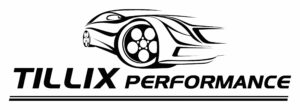Many chips these days claim to do injection timing. Most of them through sheer ignorance or lack of knowledge confuse injection open time (injector extender) with actual injector opening time.
Sounds very similar again, but is vastly different.
The ECU reads the Crank Angle Sensor to determine which piston is next in line for an injection event, and how far away it is.
It then looks up the tables that have been input into the ECU that determine at exactly what crank angle it needs to fire that cylinder.
It then looks up its compensation tables (air temp/Air flow meter/engine speed/boost/throttle postion etc….) and adds or subtracts this from its normal figure.
Once fuel is injected into the engine, it then takes a certain amount of time once ignited to expand and start doing useful work on the piston to generate torque.
The point of peak leverage that the piston and rod can put on the crankshaft happens to be about 20-30degrees after the piston has passed its highest point (TDC)
If we inject the fuel when the piston is at 20deg ATDC, by the time it expands the piston will be past the highest leverage point, resulting in low torque production.
So what we need to do is inject it well before 20deg ATDC to ensure the peak pressure is occurring at exactly the right moment.
If we inject the fuel to early though, the pressure buildup will actually be placing negative power down on the piston as it is trying to rise (Delta N is the negative power, Delta P is positive power) and peak cylinder pressures will be vastly higher putting a lot of strain on all the engine components.
Some Delta N is always going to be there, but when the timing is set right, the small amount lost to Delta N will be well and truly overcome by greater Delta P
To throw another spanner in the works, the amount of time in milliseconds it takes for the flame front to expand depends on such things as boost pressure and air temperature.
The more tightly packed the oxygen and fuel is in the cylinder, the faster it will burn.
The Pre combustion chamber in an indirect injection engine or the combustion chamber inside the piston in a direct injected engine also impacts the timing requirements heavily. A better design in this area allows the flame front to advance more rapidly once it has ignited.
At low engine speeds the piston is moving up and down relatively slowly, so the timing doesnt have to be very fast to ensure PCP (peak cylinder pressure) is reached at 20deg ATDC.
However at higher engine speeds, the piston is moving much faster. We have to inject the fuel earlier to ensure PCP occurs at 20-30deg ATDC.
So as you can see, timing a critical aspect when tuning any engine.
If it is set wrong, the engine will either make little torque or possibly be damaged through excessive cylinder pressure.
Factory injection timing is NEVER right. It is tuned not for peak torque or peak engine efficiency or maximum engine longevity.
The ONLY factor that matters to the OEM is Engine Exhaust Emissions! Cleanest emission timing is worlds apart from Efficiency/Torque/Longevity.
2 Degrees of crankshaft rotation earlier injection timing is all it takes sometimes! It sounds insignificant, but this can produce an 8-10kw at the wheels gain in power with no additional fuel or boost. However emissions will suffer greatly for this which is why OEM do not make it perfect for Power/Efficiency.
As has previously been said, the gap between factory and ideal timing is closing but it is still there on most vehicles.

